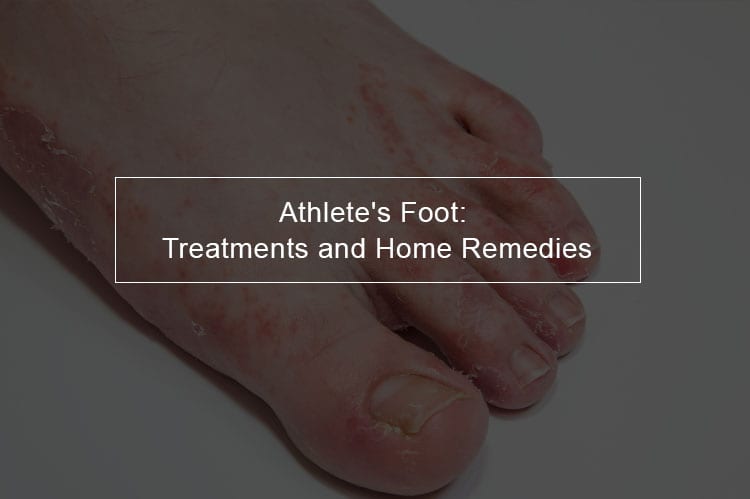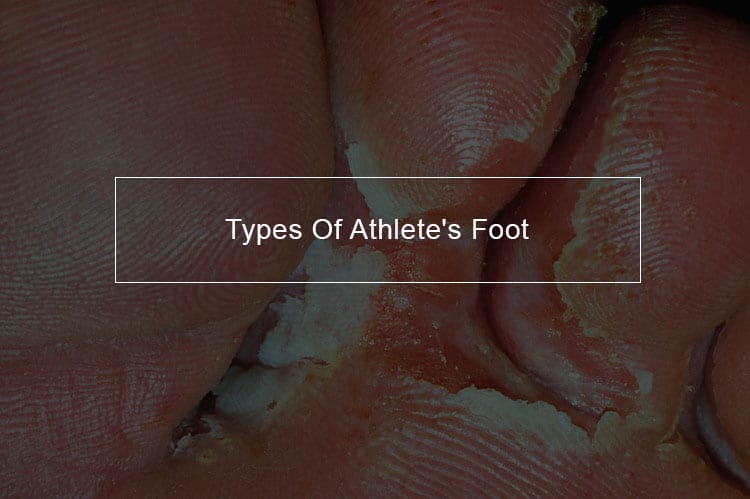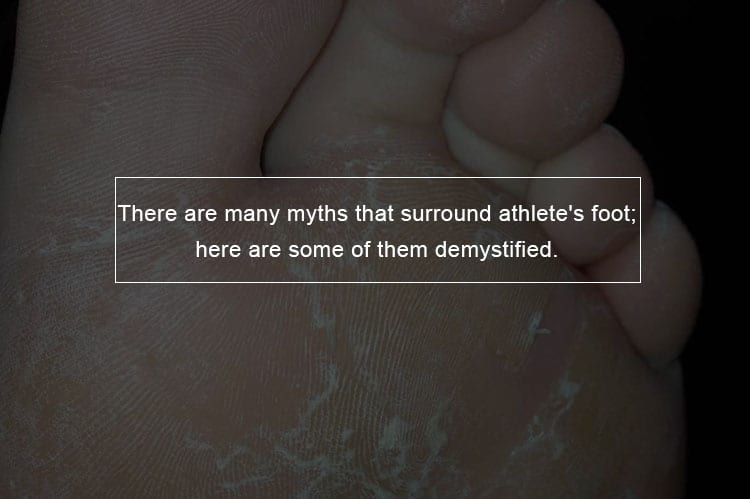
Before we learn how to get rid of athlete's foot, we must first properly understand the condition.
What is athlete's foot?
This is a fungal infection on the feet. Athlete's foot is not serious, but the symptoms are very troublesome. Anyone can get it; you do not have to be an athlete.
What causes athlete's foot?
Most of the athlete's foot cases are brought on by a variety of fungi all coming from a group called dermatophytes, which likewise triggers jock itch and ringworm. The fungi grow in closed, warm, wet environments and eat keratin, a protein in nails, skin, and hair. In rare circumstances, athlete's foot can be triggered by non-dermatophytes, like yeast.
Athlete's foot is contagious. Even though it is mild, it can be spread through direct contact with the infection and by skin particles left on shoes, floors, or towels. Walking barefoot increases the risk of getting athlete's foot. Moreover, some people are more susceptible to getting the condition than others. People with diabetes for example or people with impaired immune systems are at more risk if they have an open sore or cut on their feet.
What are the symptoms of athlete's foot?
Do you have a red itchy rash between your toes? You may want it checked out. Athlete's foot can spread to soles and your toenails, and if you touch, it can likewise infect your hands.
Symptoms of athlete's foot
Athlete's foot can take place on one or both feet, and there are different types. However, with any kind you have, you'll most likely see:
- Red, scaly rash between your toes that is very itchy
- Small, red blisters
- Continuous dryness and scaling on the soles
- Ulcers or sores that leak a red smelly fluid
What is athlete's foot?
You ought to treat athlete's foot as soon as you notice even minor symptoms. It's great to try over the counter products, or you might have a home remedy you like to use. However sometimes they do not work, and that's when you need to make an appointment with your doctor.
When to call your doctor regarding athlete's foot
You may require prescription-strength medication to eliminate the athlete's foot fungi if the following happens:
- The scaly rashes are ulcers or sores licking fluids
- The rash won't go away
- You have diabetes, with an infected rash
- It's infected your groin or hands
- You believe your toenails are contaminated.
What are the types of athlete's foot?

If your feet are burning or scratchy all the time, and with some red rash then you might have athlete's foot. There are, however, many types of athlete's foot.
A fungus causes this infection. The fastest and most common way of getting athlete's foot is by walking barefoot in places where the bacteria hang out. This includes the locker rooms of a gym and public swimming pools. You can also get it if you share socks, bed sheets, or bath towels with someone who currently has it.
The precise symptoms of athlete's foot depend on which particular kind of infection. Some infection causes rashes that are red and blistery. With others, your skin might appear thick and scaly.
Toe web infection
This is an interdigital infection, that means it's in between the toes and fingers. It usually starts between the pinkie toe and the fourth toe. Sometimes germs take hold and make the fungal infection worse.
Symptoms of toe web infection
- Burning sensation between your toes
- Red, peeling, or scaly, skin
- A rash may smell or produce a discharge
- In extremely bad cases, your skin may turn green
Vesicular infection
Blisters are scientifically known as vesicular, and that's precisely what marks this kind of infection. In case the blisters burst, you could get a bacterial infection that will require prescription antibiotics.
Symptoms of vesicular infection
- Happens anywhere on the foot
- Little, red blisters normally turn up on your soles or in between your toes
- The rash may feel itchy or unpleasant
- Symptoms can worsen in the summer
Ulcerative infection
This is very rare. The feet sometimes develop open sores or ulcers. Those ulcers are also open up to infection by germs. You'll need prescription antibiotics to treat this infection.
Symptoms of ulcerative infection
- Sores that may ooze discharge
- Your skin gets extremely swollen and discolored
- This type of infection is generally extremely painful.
Moccasin infection
This is when the fungi cover the sole of your foot. You may see the rash spread along your heel and up the side of your foot too.
Symptoms of moccasin infection
- First, the feet feel aching, dry, or somewhat scratchy
- Then, the skin thickens, fractures, or peels
- The toenails may likewise get thick and crumbly. Often the nails even come out.
When to call the doctor regarding the symptoms of athlete's foot?
If your symptoms keep worsening or does not improve, you'll require to get a prescription for an antibiotic, so make an appointment with your doctor.
How do you get rid of athlete's foot?
What are the treatments for athlete's foot?
You should treat athlete's foot at the very first sign of irritation.
- Athlete's foot can be treated with the OTC antifungal products and proper hygiene.
- Wash and dry your feet, especially between the toes every morning and night.
- Change socks or stockings daily.
- Always change your shoes to allow them to dry properly before they get worn again.
- Sprinkle antifungal powder on feet. Antifungal creams and sprays are also helpful.
- Ensure your feet get a lot of air. You can wear synthetic socks which will wick away moisture. Avoid wool and cotton as they trap moisture and promote fungal growth.
- Wear shoes made of permeable materials.
- Continue treatment after the condition has cleared for about two weeks.
If not treated appropriately and promptly, it can be very stubborn. Even if you use antifungal drugs, the infection might take a number of weeks to vanish and may come back after treatment. The majority of the time it responds well to these over the counter remedies. However, extreme cases may need professional attention.
How can I prevent athlete's foot?
Preventing athlete's foot
- Do not walk barefoot publicly in places such as the gym and swimming pool where people go barefoot.
- Keep your feet tidy, dry, and powdered with over-the-counter antifungal foot powder.
- Never share shoes, socks, or towels.
- Use synthetic socks, and shoes that breathe.
- If you get athlete's foot, clean your socks and towels in the hottest water possible.
- Remove your shoes at home and let your feet breathe.
Natural and Home Remedies for Athlete's Foot
Athlete's foot is simple to get, however getting rid of it can be hard. A lot of individuals have their own methods to handle it at home. There's not much clinical research study out there on how well these treatments work, however some work much better than others.
Tea tree oil for athlete's foot
This oil comes from the leaves of the tea tree. Due to the fact that it can eliminate some types of germs and fungi, people have used it to treat athlete's foot. Tea tree oil can reduce scaling, itching, burning, and swelling of athlete's foot. Improvement takes, and this method will not work for all. Tea tree oil can trigger allergic reactions or cause a skin rash. Talk to your physician about using tea tree oil beforehand. The doctor can suggest a tea tree item for you to try, or explain how to dilute the oil to avoid side effects. Never take tea tree oil by mouth given that it can be hazardous.
Ajoene from garlic for athlete's foot
Ajoene is found in garlic. It may ease the signs of athlete's foot. It can be used as an antifungal pill when used by mouth. It can be found in gel form as well. Studies show that people who applied it to their feet saw their symptoms disappear after one week. This technique could likewise assist keep your athlete's foot from returning.
Sunflower oil for athlete's foot
Made from the sunflower seeds, this oil has actually long been said to combat bacteria. A brand called Oleozon with ozone has actually been known to get rid of athlete's foot in addition to being an antifungal medication. You use the oil to your feet rather of taking it by mouth. It's uncertain whether all brands of sunflower oil work like Oleozon; however, it is worth a try.
Green tea for athlete's foot
Soak your feet in lukewarm green tea. You will start to notice reduced symptoms like peeling and soreness. That's since nutrients in green tea called polyphenols have antifungal powers. But this approach won't work quickly. You might have to soak your feet every day for three months. And more studies are required to show that green tea can eliminate the fungus, not just make your feet feel and look okay.
Sosa for athlete's foot
Studies reveal that a cream made from an extract of this shrubby plant works as an antifungal that you place on your athlete's foot. But while research studies reveal that Sosa is safe to place on your skin, it might be tough to come across this plant.
Bitter orange for athlete's foot
This fruit originates from a specific type of orange tree. It's been used for many years in Chinese medication and by individuals who reside in the Amazon rainforest. Bitter orange oil is a natural fungi fighter. Besides athlete's foot, it might assist clean-up jock stick and ringworm. One research found that using dilute bitter orange oil on the feet three times every day, the fungi cleared up after a week or two. Bitter orange can irritate your skin if used in a pure state. Moreover, it increases the chances of getting a sunburn, so make certain to secure your skin from the sun if you utilize it.
Vinegar for athlete's foot
It is believed that soaking your feet in a mix of water and vinegar will eliminate athlete's foot. While a vinegar soak will not do your feet any harm, there's insufficient evidence to show that it will do much good either.
Over-the-Counter medicine for athlete's foot
You can purchase numerous creams, sprays, and gels that treat athlete's foot at your drug store without a prescription. These will reduce your signs. The fungus itself takes six weeks to totally disappear. If you've attempted one or two of these methods and your athlete's foot still doesn't clean up, call your doctor to advise you further.
Natural and Home Remedies for Athlete's Foot
The feet are usually inside shoes and socks all day, and hence end up being sweaty and smelly. This becomes the ideal vessel for all sorts of tiny bacteria. A few of those bacteria can be found on the floors of gyms and swimming pools. When they invade susceptible feet, they can trigger a red, itchy condition that is athlete's foot.

Myth 1: Athlete's foot is for athletes only
You do not need to be a professional athlete-- or even an athlete at all-- to get this foot infection. The name is because the fungus that causes it is mostly found in places professional athletes frequent, like locker rooms and showers. If you are exposed to the fungi, you can get contaminated.
Myth 2: Showering frequently can prevent athlete's foot
Showering is, in fact, one of the methods you can get athlete's foot. Enter a locker room or pool shower with bare feet, and you can pick up the condition. Showering alone will not clear up the fungi that cause athlete's foot, but keeping your feet tidy and dry can help avoid this fungus from returning.
Myth 3: Athlete's foot can only be contacted by walking barefoot in areas where the fungus lives
Strolling barefoot in public showers or locker rooms is one method to get athlete's foot, but it's not the only method. You can also end up being contaminated if you share a towel, shoes, or socks with someone who has athlete's foot.
Myth 4: If you do not have skin peeling between your toes, it's not athlete's foot
Athlete's foot appears different in everyone. Some people do get peeling or splitting skin; others have inflammation or dryness on the bottom of their feet. If you're unsure what's going on with your feet, see a doctor or a podiatrist.
Myth 5: Athlete's foot is different from jock itch
Jock itch and athlete's foot are caused by the same fungi (called tinea), which leaves scaly patches on the skin. On the feet, tinea infection is called athlete's foot. The same condition is called jock itch when it affects the groin area.
Myth 6: Only individuals with bad hygiene get athlete's foot
Athlete's foot has nothing to do with tidiness. Even if you clean your feet with soap and water numerous times a day, you can get athlete's foot, especially if you do not dry your feet.
Myth 7: Athlete's foot is only for the feet
Athlete's foot can spread if you scratch the itch and then touch other parts of your body, like your underarms or groin. It can likewise infect other parts of your body via infected clothing or sheets.
Myth 8: Athlete's foot will clear up on its own
Without treatment, athlete's foot will make your feet even itchier and more miserable. It can also develop into a more severe infection if you do not look after it. Antifungal creams and tablets are the best treatments for athlete's foot.
Myth 9: You can stop using medication as soon as your signs clean up
To avoid athlete's foot from returning, strictly follow the prescription as recommended by the doctor.
Myth 10: To prevent athlete's foot, use socks made from cotton and natural fibers
The opposite is true. Natural fibers like wool or cotton tend to hold the moist from the feet. The fungus that trigger athlete's foot love to live in moist areas. Synthetic fiber socks wick the moisture away from the feet.
Myth 11: Once you deal with athlete's foot, it is gone for good
Even after it's been treated, athlete's foot can reappear if you don't take steps to prevent it.




